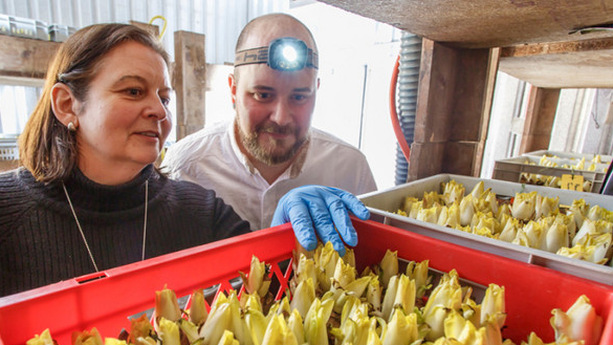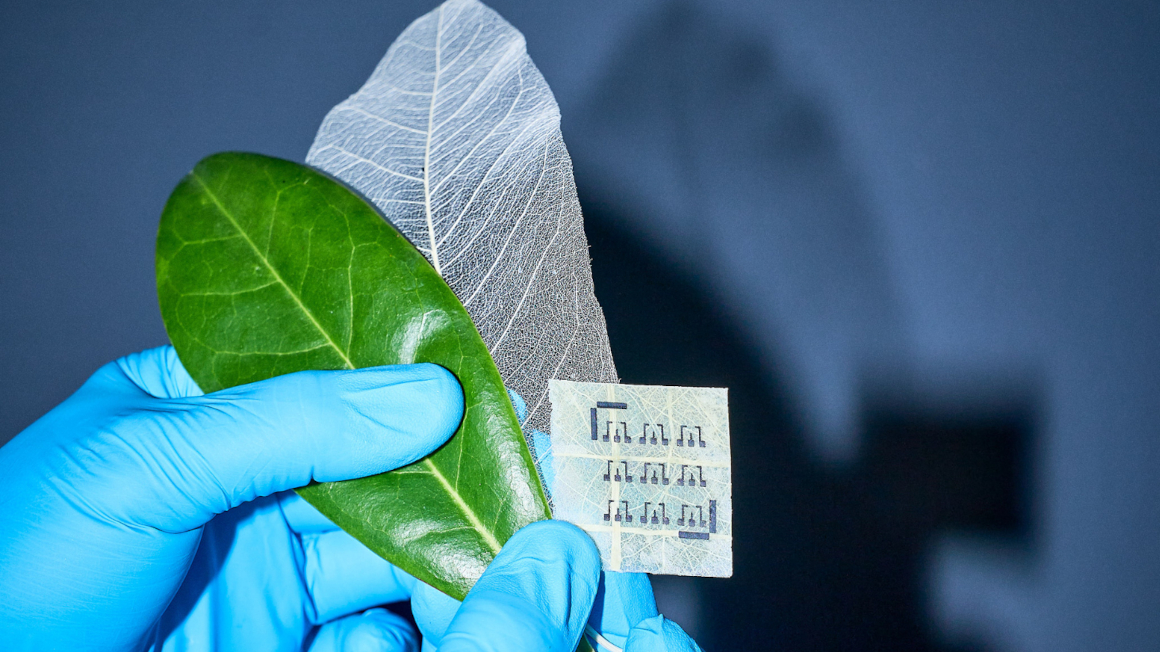Chemical building blocks made from chicory waste
Chicory is popular as a lettuce for its slightly bitter taste and can be eaten raw, baked, roasted or stuffed. Favoured for its yellowish-white creamy head of leaves, chicory is grown underground in the absence of sunlight to prevent the leaves turning green or opening up, with only the tips of the leaves showing above the surface.

The hidden part of the plant – the tuberous root – that makes up 30% of the plant, however, is discarded. In Europe alone, 800,000 tonnes of chicory roots are generated during the production of chicory salad each year. Currently, after harvesting the chicory leaves, the roots are disposed of as compost or in biogas plants. Wanting to make use of the waste, researchers at the University of Hohenheim have now succeeded in generating hydroxymethylfurfural (HMF) from the chicory plant’s discarded roots. Bio-based HMF is a basic material used in the production of plastic bottles, nylon or polyester. In addition, HMF based on chicory is of higher quality than when its made from crude oil and it is also not a competitor in the food industry. These modules are not just restricted to farming in space; they will also be useful on earth.
The consumer knows chicory as a lettuce and until now outside of a culinary context, chicory has received little attention. However, it's the roots of the white-yellowy buds that are now being looked at as a valuable resource for the bioeconomy. Until now, this part of the plant ends up at composting plants, and only a fraction is used to produce biogas, because the yield of biogas is too low in order to generate electricity efficiently. In contrast to the food industry, scientists at the University of Hohenheim in German are focusing on the non-edible part of the chicory plant. “The root makes up approximately 30% of the plant. The stored carbohydrates are not fully used for the formation of the buds and valuable reserve substances remain. However, the roots can only be used once of chicory growing and have to be thrown away after the buds are harvested,” explains agricultural biologist Dr Judit Pfenning.
In a windowless room in the experimental station of the Hohenheim campus, the walls are covered with three-story shelves holding numerous tubs lined with pond foil. The tubs contain plastic baskets in which the 15-20 cm long roots are placed upright. Over a period of three weeks, these roots grow into chicory buds ready to sell.
An aquarium pump waters the plants with a nutrient solution. The room is kept dark so the salad leaves do not lose their yellow pastel shade or develop any of the bitter substances typical for chicory.The commercial production of chicory salad on the basis of water does not look much different – but a lot bigger: the biennial chicory plant only spends the first five months in the fields. In mid-October, the leaves are mulched and the roots are harvested, stored in a cool place, and then brought to the growing rooms.
Bio-HMF more valuable than crude oil-based chemicals
In a laboratory, Prof. Dr Andrea Kruse demonstrates just how valuable the root really is. In the background you can see pencil-high stainless steel tube reactors filled with chopped chicory roots and water. After adding diluted acid into the ultra-stable pressure container, it is heated up to a temperature of 200 degrees. Afterwards, the watery product is processed in further steps, which are kept confidential. At the end of this process their research associate Dominik Wüst looks at the result: unpurified hydroxymethylfurfural in the form of yellow-brown crystalline powder. This is one of the 12 basic chemicals, which will be used in the future in the plastic industry. It serves as a raw material for nylon, perlon, polyester, or plastic bottles – so-called PEF-bottles, not the PET-bottles. On the wholesale market, it is currently worth 2000 euros per kilo.
Chicory-based HMF in the bioeconomy
Until now, chicory HMF has been obtained by crude oil. As part of a previous research project, Prof. Dr Kruse found a way to extract the basic chemical HMF from fructose. But she believes that HMF made from chicory roots is a more sophisticated source because it does not compete with food resources. “Fructose is edible. There are better uses for it than extracting HMF.” This is not the case with chicory roots, which are inedible. “Until now, they were waste,” she says. There is another aspect that makes the project even more likely to be successful: “The chicory root is not only perfectly suited for the production of HMF because it is waste,” says Dr Kruse, “it also produces a chemical of higher value than the crude oil-equivalent.” This means that PEF-bottles made out of chicory-HMF could be thinner than bottles made of crude oil-PET, resulting in less transportation costs and is better for the environment.
Quality guarantee
As promising as the results are, the researchers still have to overcome another challenge in order for the bio-based plastic chemical to actually penetrate its fossil fuel competitors. “The root is only of interest for the industry if we can guarantee permanent quality,” explains Dr Kruse.


